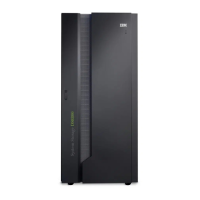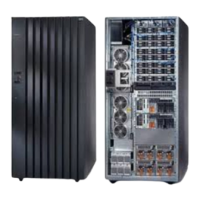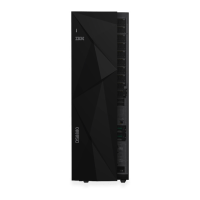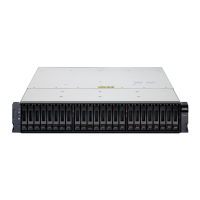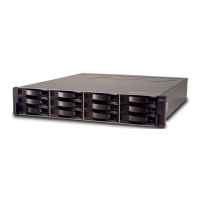I/O load balancing
You can maximize the performance of an application by spreading the I/O load across processor nodes,
arrays, and device adapters in the storage system.
During an attempt to balance the load within the storage system, placement of application data is the
determining factor. The following resources are the most important to balance, roughly in order of
importance:
• Activity to the RAID drive groups. Use as many RAID drive groups as possible for the critical
applications. Most performance bottlenecks occur because a few drive are overloaded. Spreading an
application across multiple RAID drive groups ensures that as many drives as possible are available.
This is extremely important for open-system environments where cache-hit ratios are usually low.
• Activity to the nodes. When selecting RAID drive groups for a critical application, spread them across
separate nodes. Because each node has separate memory buses and cache memory, this maximizes
the use of those resources.
• Activity to the device adapters. When selecting RAID drive groups within a cluster for a critical
application, spread them across separate device adapters.
• Activity to the Fibre Channel ports. Use the IBM Multipath Subsystem Device Driver (SDD) or similar
software for other platforms to balance I/O activity across Fibre Channel ports.
Note: For information about SDD, see IBM Multipath Subsystem Device Driver User's Guide (http://
www-01.ibm.com/support/docview.wss?uid=ssg1S7000303). This document also describes the
product engineering tool, the ESSUTIL tool, which is supported in the pcmpath commands and the
datapath commands.
Storage consolidation
When you use a storage system, you can consolidate data and workloads from different types of
independent hosts into a single shared resource.
You can mix production and test servers in an open systems environment or mix open systems and IBM Z
hosts. In this type of environment, servers rarely, if ever, contend for the same resource.
Although sharing resources in the storage system has advantages for storage administration and resource
sharing, there are more implications for workload planning. The benet of sharing is that a larger resource
pool (for example, drives or cache) is available for critical applications. However, you must ensure that
uncontrolled or unpredictable applications do not interfere with critical work. This requires the same
workload planning that you use when you mix various types of work on a server.
If your workload is critical, consider isolating it from other workloads. To isolate the workloads, place the
data as follows:
• On separate RAID drive groups. Data for open systems or IBM Z hosts is automatically placed on
separate arrays, which reduce the contention for drive use.
• On separate device adapters.
• In separate processor nodes, which isolate use of memory buses, microprocessors, and cache
resources. Before you decide, verify that the isolation of your data to a single node provides adequate
data access performance for your application.
Count key data
In count-key-data (CKD) disk data architecture, the data eld stores the user data.
Because data records can be variable in length, in CKD they all have an associated count eld that
indicates the user data record size. The key eld enables a hardware search on a key. The commands
30
IBM DS8900F: DS8900F Introduction and Planning Guide
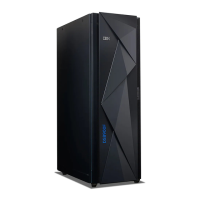
